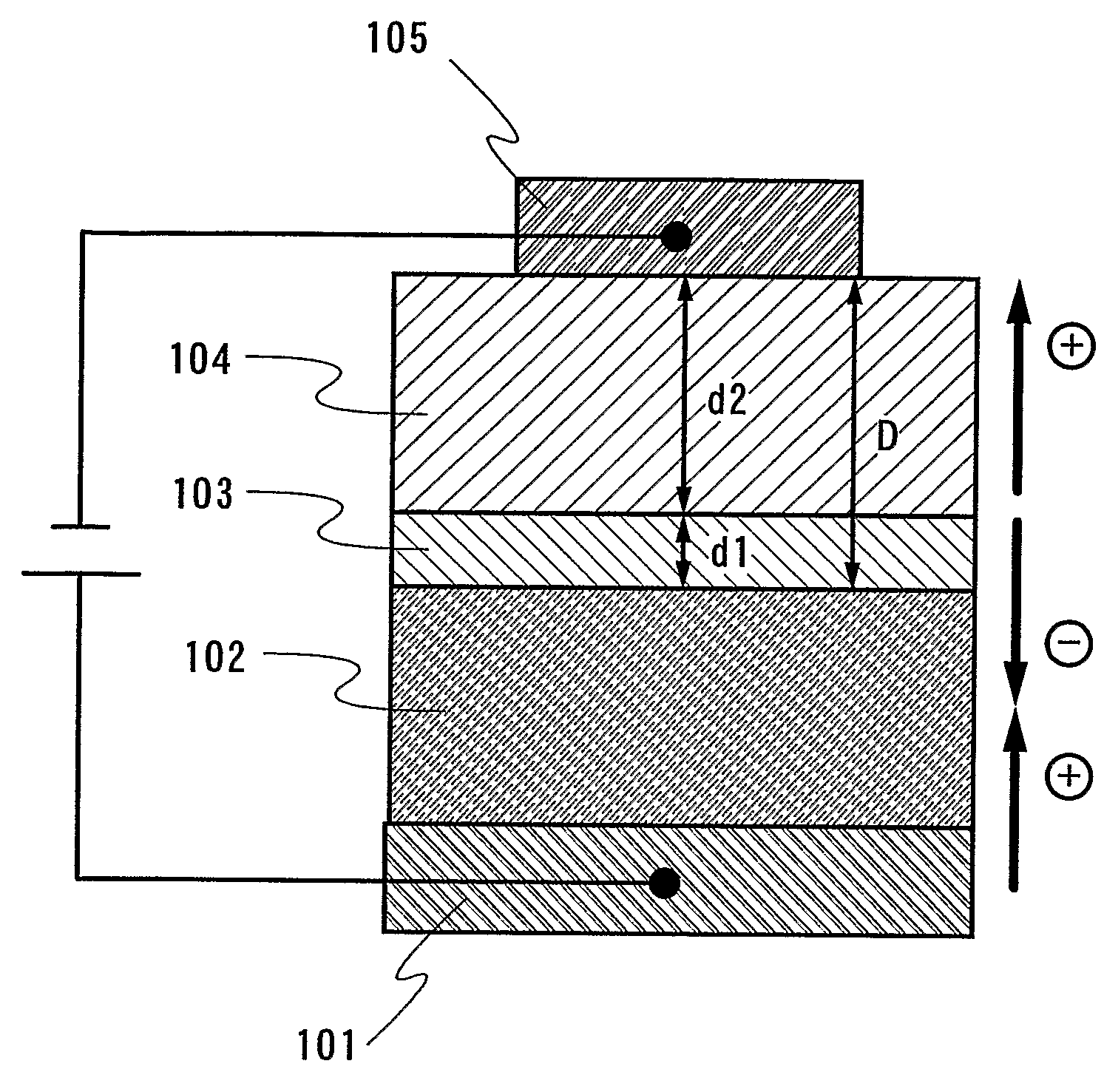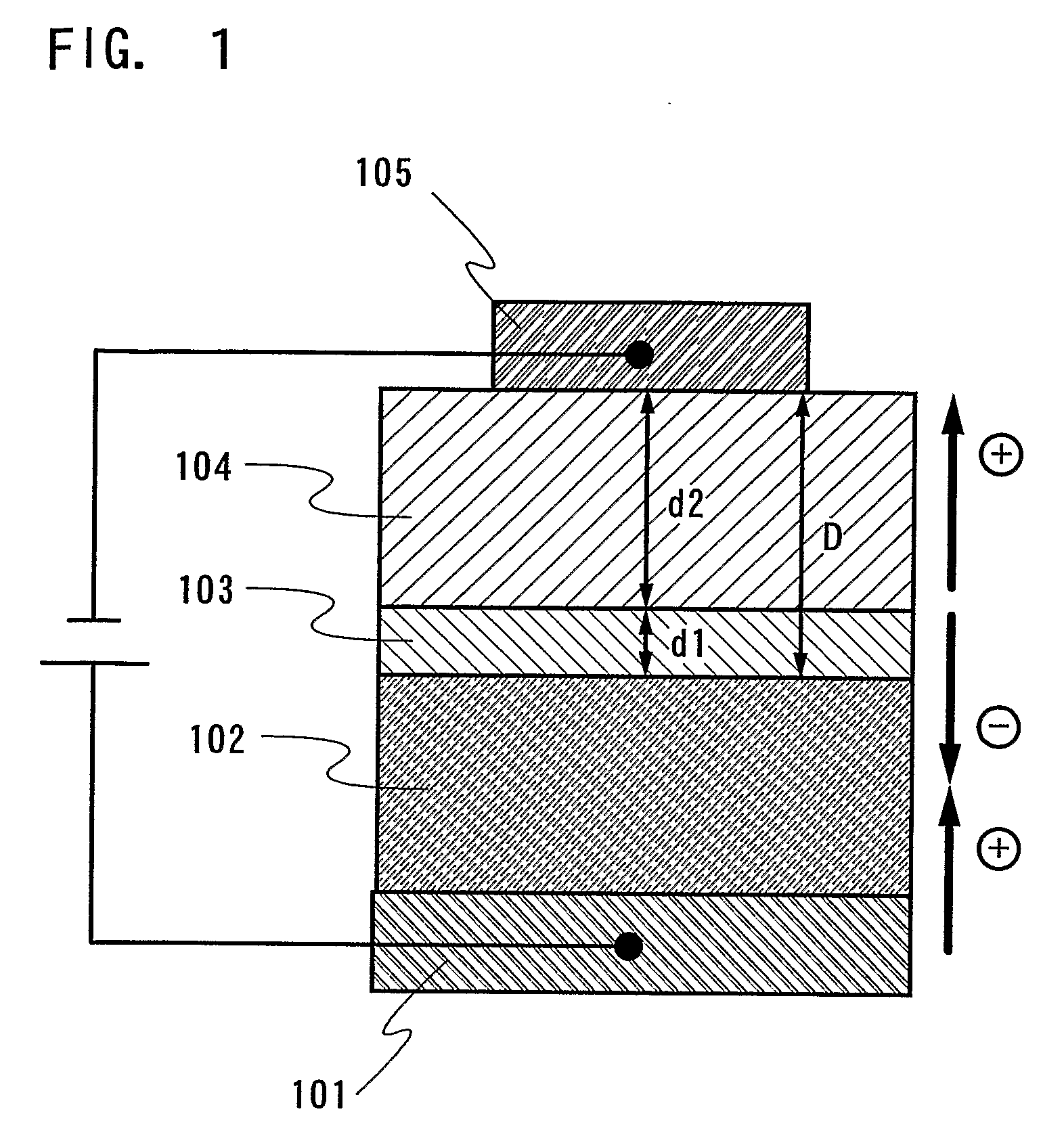Light-emitting element
- Summary
- Abstract
- Description
- Claims
- Application Information
AI Technical Summary
Benefits of technology
Problems solved by technology
Method used
Image
Examples
embodiment 1
[0053] A light-emitting element according to the present invention is explained in Embodiment 1 with reference to FIGS. 3A to 3C.
[0054] As illustrated in FIGS. 3A to 3C, a light-emitting element has a configuration composed of an anode 301 formed over a substrate 300, a first layer containing a light-emitting material 302 formed over the anode 301, a second layer 303 formed over the first layer 302, a third layer 304 formed over the second layer 303, and a cathode 305 formed over the third layer 304.
[0055] As a material for the substrate 300, any substrate as long as it is used in the conventional light-emitting element can be used. For example, a glass substrate, a quartz substrate, a transparent plastic substrate, or a substrate having flexibility can be used.
[0056] As an anode material for forming the anode 301, metal having a large work function (at least 4.0 eV), alloys, compounds having electrical conduction properties, and mixture of these materials are preferably used. As...
embodiment 2
[0073] A configuration of a light-emitting element according to the present invention is explained with reference to FIGS. 4A to 4C in Embodiment 2.
[0074] A substrate 400, an anode 401, a first layer 402, a second layer 403, a third layer 404, and a cathode 405 can be formed by the same materials and the same processes explained in Embodiment 1, and are explained in no more details.
[0075] As illustrated in FIGS. 4A to 4C, a light-emitting element has a configuration composed of a cathode 405 formed over the substrate 400, the third layer 404 formed over the cathode 405, the second layer 403 formed over the third layer 404, the first layer 402 containing a light-emitting material formed over the second layer 403, and the anode 401 formed over the first layer 402.
[0076] A light-emitting element according to the invention has the structure that light generated by recombination of carries within the first layer containing the light-emitting material is emitted from either the anode 4...
embodiment 3
[0081] In this embodiment, a light-emitting element is manufactured over a substrate 500 such as a glass, quartz, metal, bulk semiconductor, transparent plastic, or flexible substrate. A passive light-emitting device can be manufactured by a plurality of such the light-emitting elements over one substrate. A light-emitting element may be manufactured to be in contact with a thin film transistor (TFT) array as shown in FIG. 5 instead of manufacturing the light-emitting element over the substrate such as a glass, quartz, transparent plastic, or flexible substrate. Here, reference numeral 511 denotes a TFT; 512, a TFT; and 513, a light-emitting element according to the present invention. The light-emitting element 513 is composed of an anode 514, first, second, and third layers 515, and a cathode 516; and is connected electrically to the TFT 511 via a wiring 517. Thus, an active matrix light-emitting device that controls driving of a light-emitting element by a TFT can be manufactured....
PUM
 Login to View More
Login to View More Abstract
Description
Claims
Application Information
 Login to View More
Login to View More - R&D
- Intellectual Property
- Life Sciences
- Materials
- Tech Scout
- Unparalleled Data Quality
- Higher Quality Content
- 60% Fewer Hallucinations
Browse by: Latest US Patents, China's latest patents, Technical Efficacy Thesaurus, Application Domain, Technology Topic, Popular Technical Reports.
© 2025 PatSnap. All rights reserved.Legal|Privacy policy|Modern Slavery Act Transparency Statement|Sitemap|About US| Contact US: help@patsnap.com



